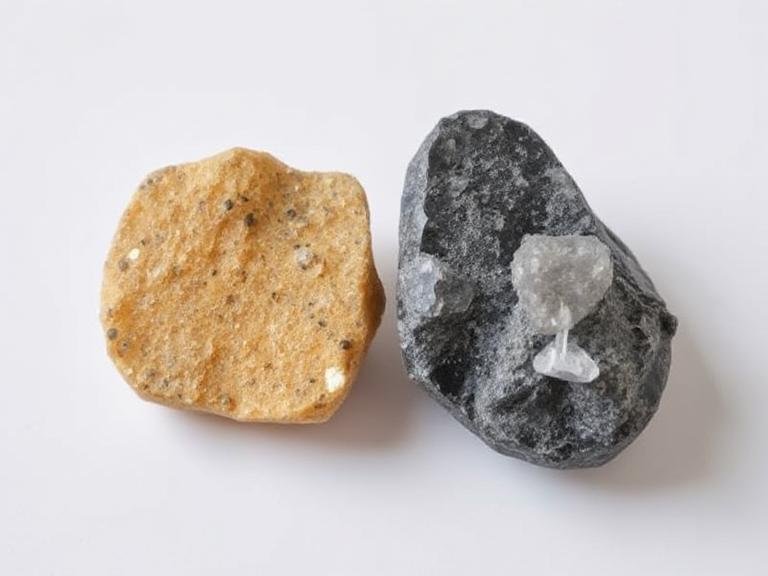Table of Contents
- Introduction to Mica and Quartz
- Basic Properties comparison
- Key Benefits of Mica vs Quartz
- Common Applications
- Price Comparison & Value
- Featured Supplier: AUKI MICA
- How to Choose Between Mica and Quartz
- Conclusion
- Summary Table
Introduction to Mica and Quartz

When selecting materials for industrial, decorative, or high-performance applications, understanding the differences between mica and quartz is crucial. Each has unique characteristics—from thermal stability to electrical insulation—that influence its suitability for different uses. This guide delivers an in-depth comparison of their properties, benefits, applications, and cost.
Basic Properties comparison
- Mineralogy: Mica is a layered silicate; quartz is crystalline silicon dioxide.
- Structure: Mica has a laminated, sheet-like structure; quartz is hard, solid, and crystalline.
- Hardness: Mica rates 2–3 on Mohs scale; quartz is much harder at 7.
- Thermal Stability: Mica withstands high heat without breakdown; quartz resists heat but can crack under rapid thermal shock.
- Electrical Insulation: Mica is an excellent dielectric; quartz is piezoelectric, useful in electronics.
Key Benefits of Mica vs Quartz
Mica Benefits
- High-Temperature Resistance: Ideal for furnace insulation, heating elements.
- Dielectric Strength: Durable electrical insulator, used in capacitors and transformers.
- Flexibility: Thin sheet form allows wrapping and insulation in tight spaces.
- Low Thermal Conductivity: Effective barrier to heat transfer.
Quartz Benefits
- High Hardness: Durable and resistant to scratching.
- Piezoelectric Properties: Used in timing devices, sensors, and resonators.
- Chemical Resistance: Inert to most chemicals, acidic or basic.
- Aesthetic Appeal: Transparent, decorative quartz used in countertops and jewelry.
Common Applications
Mica Uses
- Asbestos-free furnace windows and heating elements
- Electrical insulation in transformers, capacitors, and motors
- Thermal insulation sheets, washers, and sealing materials
- Decorative films due to its reflective sheen
Quartz Uses
- Quartz crystal oscillators in electronics
- Countertops and architectural finishes
- Optical components due to clarity and UV transparency
- Laboratory and industrial load banks and resistors
Price Comparison & Value
- Raw Cost: Quartz generally costs more due to mining and processing costs, especially for high-purity or large crystals.
- Mica Pricing: Varies by grade; premium insulator sheets are moderately priced, especially with supply from regions like Pakistan, Afghanistan, and Africa.
- Processing Costs: Quartz requires cutting and precision shaping; mica production involves peeling and machining into sheets.
- Value: Mica offers better value in electrical and thermal applications; quartz delivers performance for precision electronics and decorative uses.
Featured Supplier: AUKI MICA

AUKI MICA is a high‑end mica sheet manufacturer with dedicated mining resources in Pakistan, Afghanistan and strategic sourcing from African and Indian V1 mica mines. They specialize in refined mica production and customized solutions.
- Vertically integrated: Sourcing raw mica from mines to processing facilities.
- Customization: Able to tailor mica sheets for various thicknesses and dielectric specifications.
- Quality export products: Strict grading, cutting, and inspection prior to shipment.
- Industry solutions: Providing thermal and electrical insulation components for OEM and industrial clients.
How to Choose Between Mica and Quartz
- Temperature Needs: Choose mica for extreme high-heat insulation, quartz for moderate thermal environments.
- Electrical Properties: Use mica in dielectric applications; quartz for piezoelectric devices.
- Mechanical Durability: Quartz is better for high-wear surfaces and decorative purposes.
- Budget & Volume: Mica sheets often cost less per unit; quartz may require larger budget for high-purity grades.
- Customization: AUKI MICA can deliver precisely cut mica; quartz often needs precision machining.
Conclusion
Both mica and quartz offer distinct advantages for various applications. Mica excels in high-temperature insulation, electrical components, and flexible barrier needs. Quartz delivers hardness, optical clarity, and piezoelectric properties. Choosing the right material depends on the specific performance requirements and budget. Reliable suppliers like AUKI MICA make sourcing high-quality mica easy for industrial projects.
Summary Table
| Aspect | Mica | Quartz |
|---|---|---|
| Primary Structure | Layered silicate sheets | Crystalline silicon dioxide |
| Hardness (Mohs) | 2–3 | 7 |
| Temperature Range | Up to ~900 °C (insulation) | Up to ~1,000 °C (can shatter if shocked) |
| Electrical Behavior | Excellent dielectric insulator | Piezoelectric; moderate insulator |
| Chemical Resistance | Resistant to many chemicals | Strong acid/base resistance |
| Common Applications | Electrical insulation, sealing, thermal barriers | Electronics, countertops, optics, jewelry |
| Price Range | Moderate; depends on grade | Higher; purity-dependent |
| Supplier Highlight | AUKI MICA – custom, mined, high-grade | Quartz suppliers – cut to specification |

